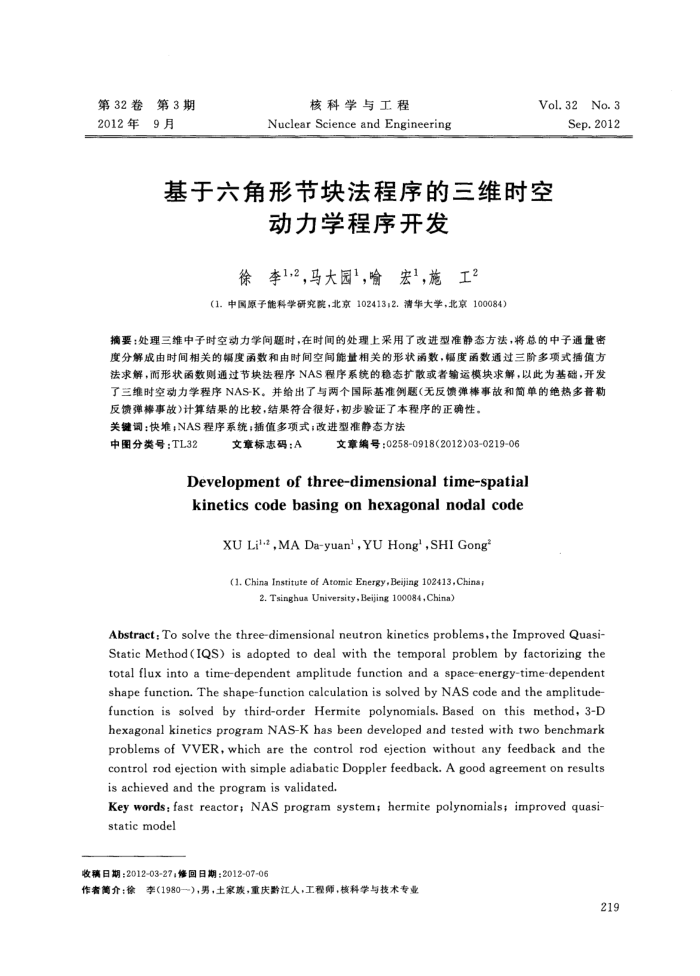基于六角形节块法程序的三维时空动力学程序开发
内容简介
 第32卷 2012年
第32卷 2012年第3期 9月
核科学与工程
Nuclear Science and Engineering
Vol.32No.3
Sep.2012
基于六角形节块法程序的三维时空
动力学程序开发
徐李1.2,马大园1,喻宏1,施工2(1.中国原子能科学研究院,北京102413;2.清华大学,北京100084)
摘要:处理三维中子时空动力学间题时,在时闻的处理上采用了改进型准静态方法,将总的中子通量密度分解成由时间相关的幅度函数和由时间空间能量相关的形状函数,幅度函数通过三阶多项式播值方法求解,而形状函数则通过节块法程序NAS程序系统的稳态扩散或者输运模块求解,以此为基础,开发了三维时空动力学程序NAS-K。并给出了与两个国际基准例题(无反馈弹棒事故和简单的绝热多普勤
反馈弹棒事故)计算结果的比较,结果符合很好,初步验证了本程序的正确性。关键调:快堆;NAS程序系统;插值多项式;改进型准静态方法
中图分类号:TL32
文章标志码:A
文章编号:0258-0918(2012)03-0219-06
Development of three-dimensionaltime-spatial kineticscodebasingonhexagonalnodalcode
XU Lil,MA Da-yuan',YU Hong',SHI Gong(1. China Institute of Atomic Energy,Beijing 102413, Chins;
2. Tsinghua University, Beijing 100084,China)
Abstract: To solve the three-dimensional neutron kinetics problems,the Improved Quasi Static Method(IQS) is adopted to deal with the temporal problem by factorizing the total flux into a time-dependent amplitude function and a space-energy-time-dependent shape function. The shape-function calculation is solved by NAS code and the amplitude function is solved by third-order Hermite polynomials.Based on this method, 3-D hexagonal kinetics program NAS-K has been developed and tested with two benchmark problems of VVER, which are the control rod ejection without any feedback and the control rod ejection with simple adiabatic Doppler feedback. A good agreement on results is achieved and the program is validated.
Key words:fast reactor; NAS program system; hermite polynomials; improved quasi-static model
收稿日期:2012-03-27,修回日期:2012-07-06
作者离介:徐李(1980一),男,土家族,重庆黔江人,工程师,核科学与技术专业
219
上一章:快堆冗余电气系统自动切换控制设计
下一章:铅铋合金热膨胀性能及室温时效研究